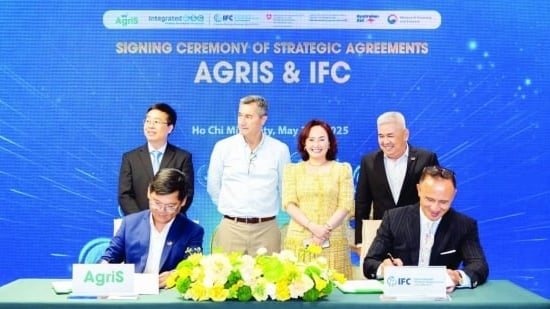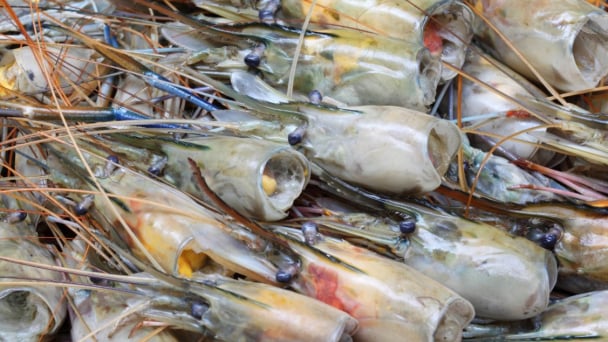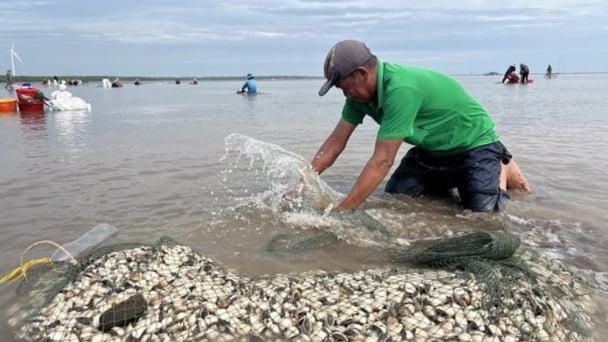June 2, 2025 | 18:32 GMT +7
June 2, 2025 | 18:32 GMT +7
Hotline: 0913.378.918
June 2, 2025 | 18:32 GMT +7
Hotline: 0913.378.918

A concentrated cow raising model is developed by Phu Lam Corporation in Mong Cai City (Quang Ninh province). Photo: Nguyen Thanh.
Quang Ninh's animal husbandry is working closely with localities to speed up building disease-free zones and producing high-quality animal products which meet the requirements for food safety in markets; thereby promoting exports, adding value to livestock production as well as increasing the income of farmers.
In fact, although the establishment of disease-free zones has brought a wide range of benefits high cost of investment has hampered the implementation. On the other hand, small-scale livestock production has still faced many issues such as low vaccination rates, weak livestock management and monitoring. As a result, infectious disease outbreaks on livestock such as bird flu, African Swine Fever (ASF), Lumpy Skin Disease (LSD) have continued and caused severe economic losses to breeders.
To overcome the difficulties, the local authorities of Quang Ninh provinces, especially the mountainous districts have paid attention to reducing the environmental impact of animal production.
According to the statistics of the Department of Agriculture and Rural Development of Quang Ninh, the province is now the home of more than 41,000 breeding facilities including 1,244 livestock farms and 39,848 household breeding facilities. Nearly 80% of animal waste are collected and treated with more than 9,000 biogas digesters.
By the end of 2021 Quang Ninh's total herd of livestock and poultry increased compared to 2020, stabilizing at 69,000 buffaloes, over 307,000 pigs and more than 4 million poultry. The estimated 650 tons of animal waste excluding livestock urine were generated every day.
Generally, almost breeding farms in Quang Ninh have waste treatment facilities. Particularly, large-scale and farms and livestock enterprises have become more and more aware of waste treatment and 100% of them have environmental Impact assessment report or environmental protection plan.
However, the Department of Agriculture and Rural Development of Quang Ninh assessed that animal waste collection and treatment in the province was still having difficulties. Many breeding facilities installed and put waste treatment system into operation but the capacity was lower than demand for waste treatment in real life, leading to environment pollution.
Meanwhile most of small-scale livestock farms in the rural and mountainous areas of Quang Ninh province were still lack of animal treatment systems and the wastes were discharged into surroundings directly, having effect on environment, water resources, air quality as well as the health of individuals and communities.

In Dam Ha district (Quang Ninh province), indigenous chickens raising models are applying techniques to protect environment. Photo: Nguyen Thanh.
Dam Ha district is the home of more than 365,000 livestock and poultry including nearly 3,000 buffaloes, over 2,100 cows, more than 17,000 pigs and above 343,000 poultry.
Because most of the breeders in the district are small-scale farmers environment protection is still an existing problem. Especially, the proximity of cattle and poultry farms to houses is having impacts on surrounding environment and nearly communities.
Since 2017, the local authorities campaigned farmers to bravely borrow money from banks to build breeding facilities far away from their houses and use industrial farming models to minimize risk factors of diseases and guarantee living environment.
Tran Viet Dung, Chairman of the People's Committee of Dam Ha district said the locality will focus on attracting investments to develop concentrated breeding zones in place of small-scale farms which usually pollute environment.
Besides, Quang Ninh's Department of Agriculture and Rural Development will continues to strengthen inspections of environmental criteria at livestock farming facilities, strictly deal with violations and open training courses on biosecurity in livestock production.
Along with that, Quang Ninh made master plan on livestock production in the 2021-2025 period with a vision to 2030. The goal is to achieving 100% livestock farming facilities, slaughter houses and processing plants coming up with proper solutions to protect environment and utilize animal waste for crop, fish and renewable energy production.
Tran Xuan Dong, Director of Quang Ninh's Sub-Department of Animal Husbandry and Veterinary said apart from building large-scale and disease-free livestock farms, Quang Ninh will promote chain linkages, connecting slaughter houses with the large-scale farms to create a synchronous and systematic process from production to consumption. On top of that, Quang Ninh will pay more attention to deep processing of livestock products to both guarantee food safety and promote sustainable livestock production.
In the long term, Quang Ninh will develop policies to encourage investors to build industrial-scale livestock farms with the focus on producing safe and high-quality products through taking synchronous measures in livestock production.
Translated by Mai Tham

(VAN) TTC AgriS and IFC signed a strategic partnership to develop a sustainable agricultural value chain, aiming to achieve the Net Zero target by 2035.

(VAN) Seafood by-products are opening a new path, combining green growth and technological innovation to enhance the industry's value.

(VAN) Mr. Nguyen Thanh Cong, Vice Chairman of the Son La Provincial People's Committee, reflects on Son La’s journey from barren hills to fruitful orchards after a decade of hard work.

(VAN) FAO’s Director-General addresses the 5th Baghdad International Water Conference.
/2025/05/26/1716-4-nongnghiep-191706.jpg)
(VAN) Chain linkages, technological innovation, and raw material zoning are three strategic pillars for the coconut industry to strongly develop and elevate its position on the global agricultural map.
![Advanced mariculture – an inevitable trend: [4] Accompanied by scientists](https://t.ex-cdn.com/nongnghiepmoitruong.vn/608w/files/sohk/2025/05/13/1941-pgsts-vo-van-nha-140958_717.jpg)
(VAN) According to Assoc. Prof. Dr. Vo Van Nha, Director of the RIA III, the development of advanced offshore mariculture is no longer an option but an essential path for Vietnam’s fisheries sector.

(VAN) Vietnam is intensifying the development of mollusk farming areas that meet international standards, aiming for sustainable growth and enhancing its export position in the global seafood market.